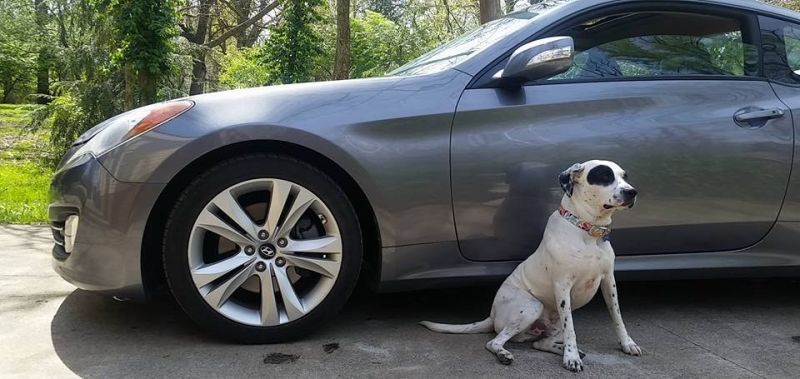
Project Hoondy’s ass was wandering all over the place.
The rear of the car shuddered and lurched whenever suddenly applying power or lifting off the gas. It would also meander around following camber changes or bumps. The feeling was unpleasant, unsettling, and growing worse with time. Owners of high-mileage E36 BMWs will be familiar with a similar sensation, especially on the M3.
These symptoms were a sure sign that at least one bushing, probably several, in the back of the car was wearing out and letting the geometry of the rear axle assembly get all wonky. It was taking the fun out of driving the car, and could potentially make it dangerous if left to fester for too long.
This was in stark contrast to how happy we had become with how the car handled after working our way through several modifications to the drivetrain mounts.
Years ago now, we decided shortly after buying Project Hoondy that its OEM drivetrain mounts needed serious help. Some research confirmed these suspicions. The Genesis Coupe is notorious for vague shifter feel, missed shifts, grinding synchros, and an overall mushy feeling with regard to how the drivetrain transmits power to the road.
The Genesis Coupe therefore has a reputation for “bad manual transmissions” and other serious drivetrain problems. This isn’t really true. While there were some ill-assembled manual transmissions that made it into the early cars, they were much rarer than the drivability issues suggest. The real problem stems from a variety of engineering compromises that Hyundai made with the Genesis Coupe. Those compromises, combined with drivers who lack mechanical empathy, lead to broken manual transmissions and other dead drivetrain parts.
So what’s the real problem?
First, Hyundai went with a two-piece driveshaft on the GenCoupe. This adds multiple rubber couplers and a center bearing to the drivetrain, introducing a lot of mechanical slop. This worsens driveline shunt and gives a vague feeling in general. It is also very heavy which never helps with the way a drivetrain feels. It just isn’t a great component to have in a driver’s car, but is an increasingly common solution these days.

Hyundai’s execution of the concept is particularly annoying though, because it features components that wear out (rubber couplers) and yet Hyundai doesn’t supply these components as individual parts. When the couplers wear out (and they absolutely will), your only OEM option is to replace the entire driveshaft which is jolly expensive.
Dick move, Hyundai.
On the subject of dick moves, we get to an even bigger issue. The drivetrain mounts on the Genesis Coupe are just too weak for hard driving. Hyundai opted to use super-soft engine and transmission mounts. These mounts help reduce NVH and make the car drive more like a typical Hyundai product, but they are woefully inadequate to contain the power of the OEM V6 engine.
Worse still, Hyundai employed a completely bizarre three-mount differential setup. We’ve never seen this sort of thing on any other car:
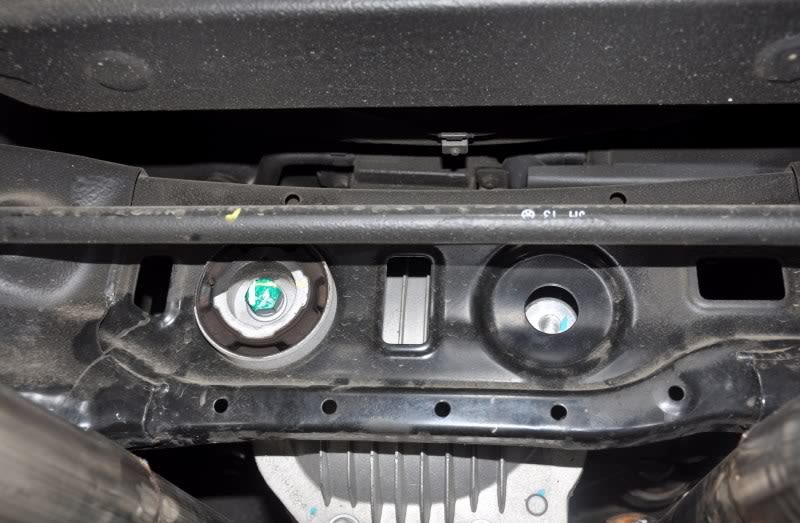
No, that is not some one-off production error. Every single Genesis Coupe looks like this underneath. You can tell this was a last-minute decision on Hyundai’s part. The differential cover was designed to accept a second rear mount, and there are provisions in the subframe for it as well. It is as if Hyundai simply removed the 4th mount very late in the car’s development.
Our best theory as to why Hyundai might have done this is that, with four mounts, the diff was quite firmly mounted. That is in contrast to the engine and transmission, which are very poorly mounted. This leads to severe movement in the engine and transmission during hard driving, with the diff remaining fairly stationary. In that scenario, the driveshaft is being whipped around on one end and being held firmly in place on the other which sounds, to us, like a scenario in which something is going to break.
Rather than go back to the drawing board with their crappy engine and transmission mounts, Hyundai simply removed one of the diff mounts and called it a day. Which, just... ugh. This may have been a cheap and easy solution, but it wreaked absolute havoc with the car’s driving dynamics. It’s all well and good for cruising around, but when you drive the car hard it doesn’t feel great. Said issue only gets worse as the car ages and the soft, inadequate mounts get even weaker.
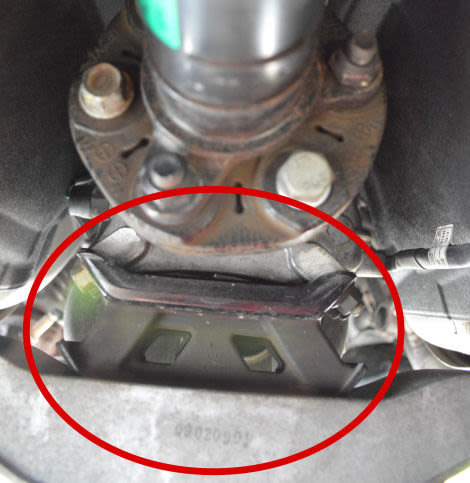
We began to tackle this issue early on in our ownership of Project Hoondy. First we dropped in a firmer transmission mount from Megan Racing. It has a similar design to the OEM part, but uses harder rubber and more of it. Good enough.
For the engine mounts though, we really wanted something properly stout and even motorsport-derived if possible. Luckily for us, a company called CP-E made just such a product. These gloriously over-built, saddle-style mounts...
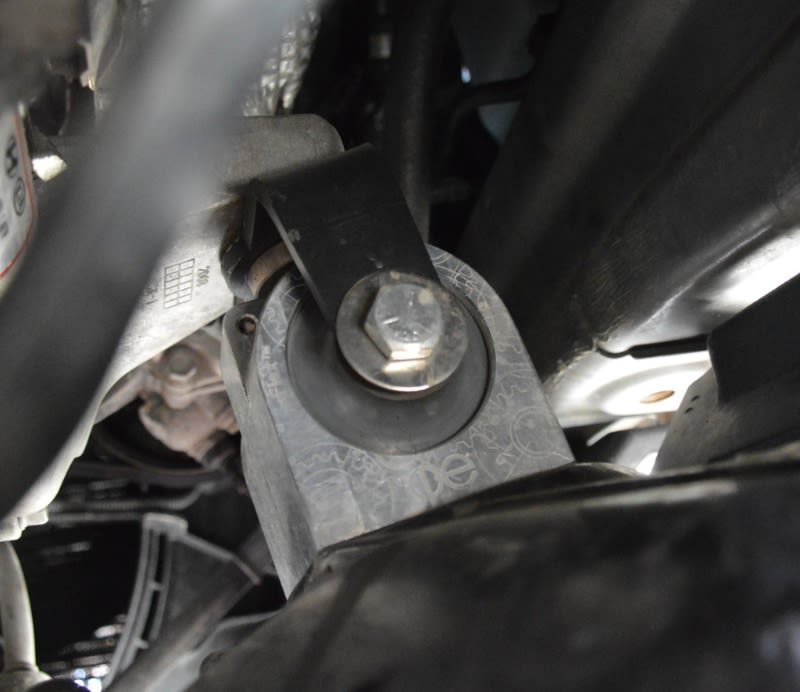
...are completely different from the lame, soft, OEM puck-style mounts:

Unfortunately for us, they were quite expensive ($350) and had a reputation for drastically increasing noise and vibration in the passenger compartment. Since the Genesis Coupe tuning scene revolves largely around hard-parking ricers, this just didn’t fly and the CP-E mounts were discontinued by the time we were ready to purchase a set of our own.
By sheer luck, we found a second-hand set for sale. We snatched them up and have cherished them ever since. The CP-E mounts were available with two different rubber compounds, “soft” and “hard.” Had the option been available, we would have opted for the soft compound to maintain street-ability.
However, our second-hand mounts had the hard compound instead. We were apprehensive about what this might do to the car after reading all the wailing and gnashing of teeth about NVH problems with these mounts, but we turned out to be pleasantly surprised. Other than an odd resonance around 1100 RPM (an engine speed we don’t spend much time at), we found the increased cabin noise completely acceptable. In fact, we think it added a lot of drama to the car and increased the presence of the fruity V6 goodness in general.
As for the wonky differential situation, there weren’t any good after-market options at the time. All we could find was this weird thing:
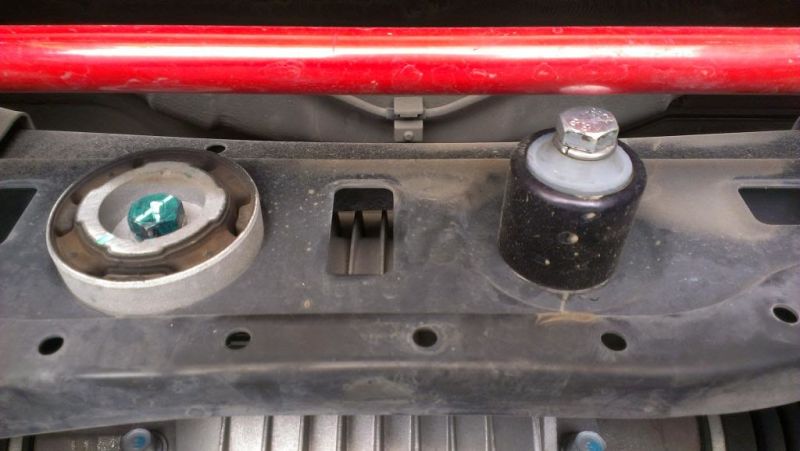
Which... no thank you. We ended up deciding to just use a second OEM mount. Not a bad option, but doing it properly involves significant modification to the rear subframe. You need to cut the hole out bigger and, ideally, weld in a sleeve that fits the OEM mount. We, uh, didn’t do that:

In our haste to solve this problem, we roughly hacked a bigger hole into the subframe with a hole-saw and then hammered a second OEM mount into place. If you look closely you can tell that we didn’t cut the hole perfectly round or perfectly centered. The second mount was therefore tweaked to one side when we bolted it to the diff cover. It didn’t make a tangable difference in terms of performance, but it sure seemed lame and just wasn’t in the spirit of the other top-quality mods on the car. We vowed to replace it with a better solution some day.
These modifications served us well for several years. To this day, the uprated engine and transmission mounts are still going strong. However, the rear end just hasn’t gone the distance. The differential mounts probably weren’t the primary cause of our wandering rear axle. Most likely it was dying control arm bushings. However, it did give us an excuse to re-visit our substandard diff mount mod. Like with our previous major modifications, we ended up taking this excuse and stretching it out into a substantial undertaking.
What began as a straightforward age-related maintenance item would become the biggest, wildest, most elaborate, most costly, and most hilariously kick-ass modification of our Genesis Coupe to date. Stay tuned to see what went down and how drastically it changed driving dynamics for the better here on Project Hoondy!